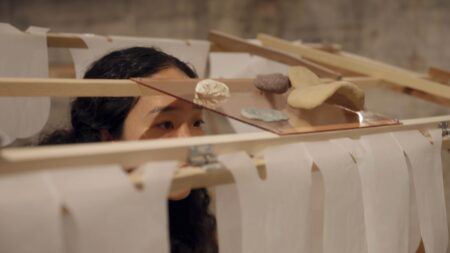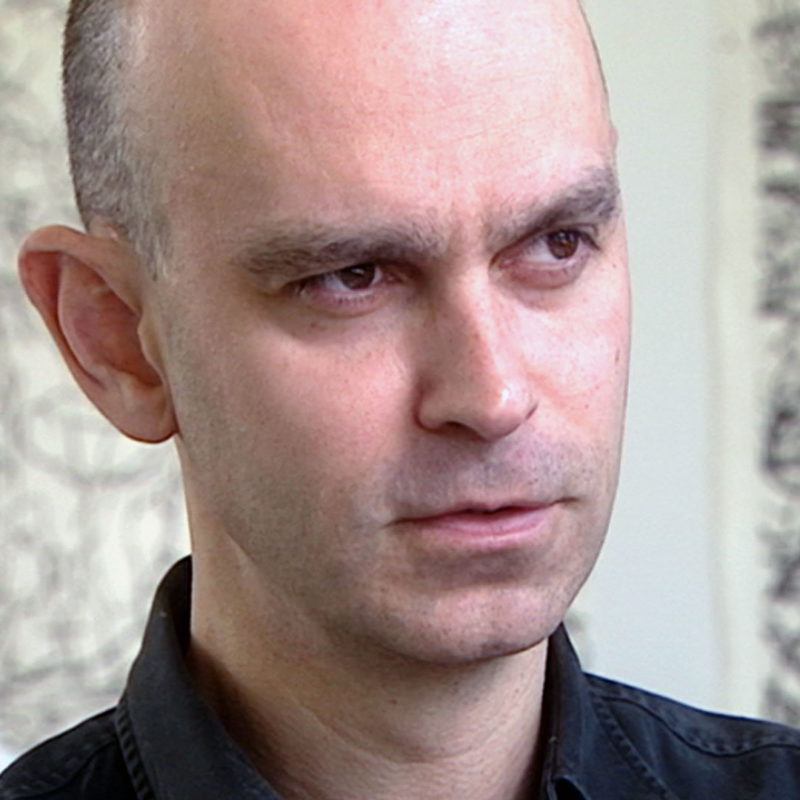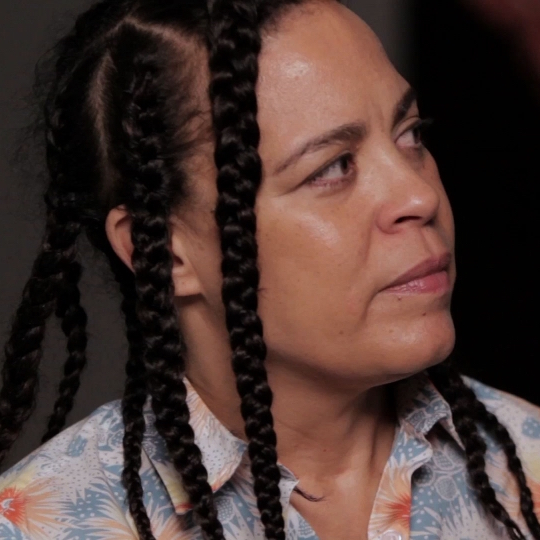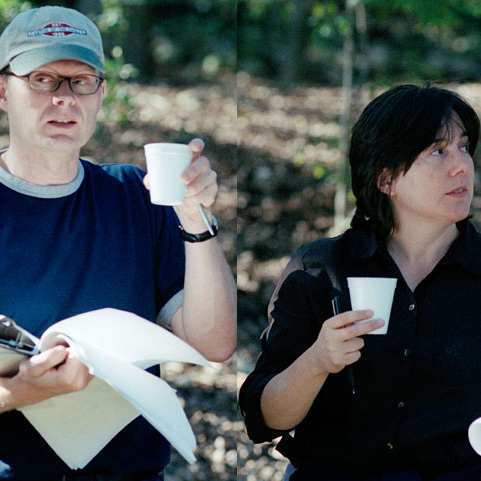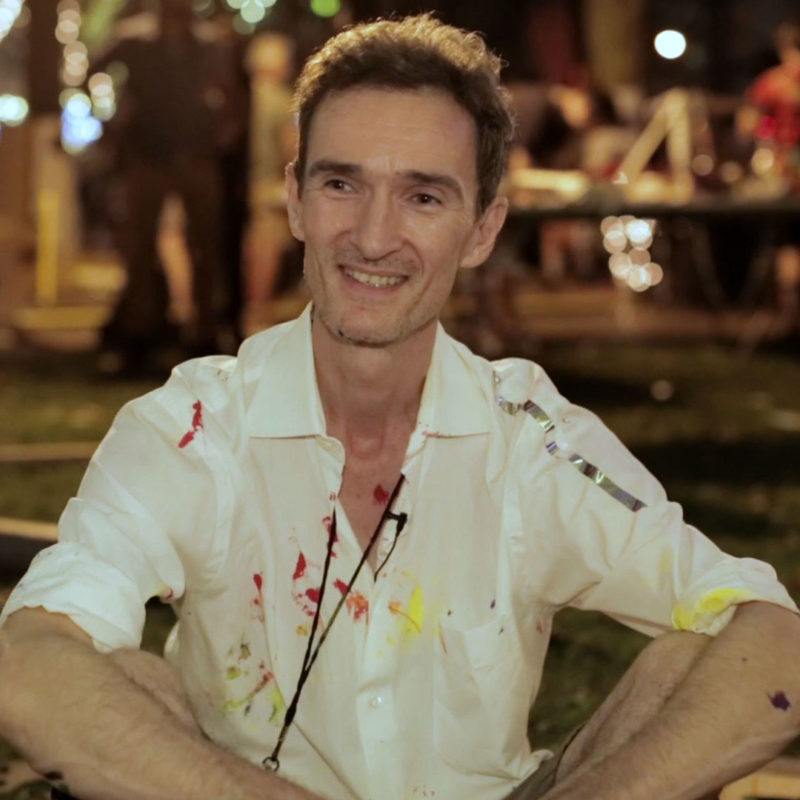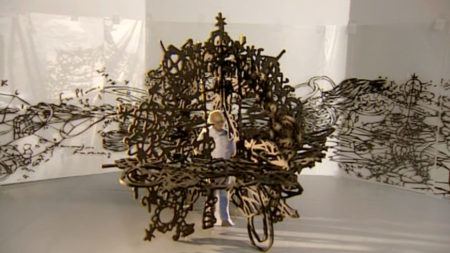Continue playing
(Time remaining: )
Play from beginning
Continue playing "{{ controller.videos[controller.getVideo(controller.currentVideo)].segmentParentTitle}}"
{{controller.videos[controller.getVideo(controller.currentVideo)].title}} has ended.
Play
The artists in Play improvise games, draw inspiration from dance and music, and employ color, pattern, and movement to elicit delight. Indulging in process, these artists transform naïve impulses into critical statements about the nature of identity, creative expression, and pleasure. Introduced by Grant Hill, Play was shot on location in Brooklyn, New York; Berlin, Germany; Santiago de Compostela, Spain; New Haven, Connecticut; Houston, Texas; and Austin, Texas.
More information and creditsCredits
Created by: Susan Sollins & Susan Dowling. Executive Producer & Curator: Susan Sollins. Series Producer: Eve-Laure Moros Ortega. Associate Producer: Migs Wright. Assistant Curator: Wesley Miller. Production Manager: Alice Bertoni. Production Coordinator: Kelly Shindler. Producer: Charles Atlas. Editor: Lizzie Donahue. Host: Grant Hill. Director of Photography: Jim Barham, Terry Doe, Mead Hunt, Tom Hurwitz, Eddie Marritz, & Joel Shapiro. Sound: Leigh Crisp, Les Honess, Mark Mandler, Roger Phenix, Gary Silver, Merce Williams, & Richard Yeats. Assistant Camera: Craig Feldman, Andrew Heikkila, Brian Hwang, Steve Nealey, Kipjaz Savoie, & Trent Wittenbach. Production Assistant: Justin Leitstein. Assistant Avid Editors: Robert Achs, Jamie Courville, Sean Frechette, Mike Heffron, David Kreger, Cara Leroy O’Connell, Joaquin Perez, Aaron Sheddrick, &
Lynn True. Still Photography: Alice Bertoni.
Creative Consultant: Ed Sherin. Art Design & Animation: Open, New York. On-Line Editor: Don Wyllie & Frame:Runner NYC. Composer: Peter Foley. Voice-Over Artist: Jace Alexander. Sound Editing: Margaret Crimmins, Greg Smith, & Dog Bark Sound. Sound Mix: Tony Volante & Sound Lounge. Animation Stand: Frank Ferrigno & Frame:Runner NYC. Introductory Host Segments Created by: INTERspectacular. Commissioned Video Art by: Teresa Hubbard / Alexander Birchler.
Artworks Courtesy of: Ellen Gallagher; Arturo Hererra; Oliver Herring; Jessica Stockholder; Blaffer Gallery, Houston; Edgar Cleijne; Gagosian Gallery, New York; Gorney Bravin + Lee, New York; Max Protetch, New York; Mitchell-Innes & Nash, New York; Brent Sikkema, New York; & Two Palms Press, New York.
Special Thanks: The Art21 Board of Trustees; Maria Baptista; Jeff Bechtel; Josie Browne; Centro Galego de Arte Contemporánea, Spain; Cherie Greer; Curious Pictures; Kim Davenport; Dieu Donné Papermill; Julie Gannon; Jay Gorney; Leta Grzan; Andrea Hall; Michael Jenkins; David Lasry; Sheri Pasquarella; Rice University Art Gallery; Natasha Roje; Soundtrack F/T; Terrie Sultan; Ttweak; University of Central Florida; Dona Warner; & The Yale Center for Media Initiatives.
Director of Education & Outreach: Jessica Hamlin. Director of Development: Kathi Pavlick. Development Associate: Sara Simonson.
Interns: Susan Agliata, Nathan Townes-Anderson, Hannah Blumenthal, Agnes Bolt, Lisa Charde, Mary Chou, Kate Crawford, Amanda Donnan, Sophie Dunoyer de Segonzac, Suzy Foster, Jules Gaffney, Katie Hen, Heather Hughes, Adam Krakowski, Georgia Kung, David Mark Kupperberg, Maiko Kyogoku, Phil Logan, Lisa Margulies, Michelle Maydanchik, Carla Meyers, Christine Miller, Geoffrey Pan, Sujay Pandit, Jihan Robinson, Jennifer Sarkilahti, Megan Scally, Karen Seapker, Greg Shilling, Sarah Sliwa, Jennifer Smith, & Elizabeth Swift.
Public Relations: Kelly & Salerno Communications. Station Relations: De Shields Associates, Inc. Legal Counsel: Albert Gottesman. Bookkeeper: Marea Alverio-Chaveco & William Handy.
Major underwriting for Season 3 of Art in the Twenty-First Century is provided by National Endowment for the Arts, PBS, Agnes Gund and Daniel Shapiro, Nathan Cummings Foundation, Corporation for Public Broadcasting, Jon and Mary Shirley Foundation, Bagley Wright Fund Bloomberg, The Horace W. Goldsmith Foundation, JPMorgan Chase, Melva Bucksbaum and Raymond Learsy, The Paul G. Allen Family Foundation, and The Andy Warhol Foundation for the Visual Arts.
Closed captionsAvailable in English, German, Romanian, Italian, Japanese, Korean, Chinese, Italian
Through the Art21 Translation Project, multilingual audiences from around the globe can contribute translations, making Art21 films more accessible worldwide.
Interested in showing this film in an exhibition or public screening? To license this video please visit Licensing & Reproduction.
Arturo Herrera’s work includes collage, works on paper, sculpture, relief, wall painting, photography, and felt wall hangings. His work taps into the viewer’s unconscious—often intertwining fragments of cartoon characters with abstract shapes and partially obscured images that evoke memory and recollection. Using techniques of fragmentation, splicing, and re-contextualization, Herrera’s work is provocative and open-ended. For his collages, he uses found images from cartoons, coloring books, and fairy tales, combining fragments of Disney-like characters with violent and sexual imagery to make work that borders between figuration and abstraction and subverts the innocence of cartoon referents with a darker psychology.
Repetition and revision are central to Ellen Gallagher’s treatment of advertisements that she appropriates from popular magazines like Ebony and Our World. Initially drawn to wig advertisements because of their grid-like structure, she later realized that it was the accompanying language that attracted her. Gallagher began to bring these “narratives” into her paintings—making them function through the characters of the advertisements, as a kind of chart of lost worlds. Although the work has often been interpreted strictly as an examination of race, Gallagher also suggests a more formal reading with respect to materials, processes, and insistences. From afar, the work appears abstract and minimal; upon closer inspection, googly eyes, reconfigured wigs, tongues, and lips of minstrel caricatures multiply in detail.
Teresa Hubbard and Alexander Birchler live and work in Austin, Texas, as life partners and artist-collaborators. Together they make short films and photographs about the construction of narrative time and space, without the context of a traditional story line; their open-ended, enigmatic narratives elicit multiple readings. They began their collaboration in the mid-1990s, making sculpture, installation, photography, and performance-based work. Their interest in the construction and negotiation of space, architecture, and the function of objects in three dimensions plays a primary role in their work. Their productions reveal a strong sense of carefully constructed mise-en-scène that owes as much to natural-history-museum dioramas as to cinematic directorial techniques.
Jessica Stockholder is a pioneer of multimedia genre-bending installations that have become a prominent language in contemporary art. Her site-specific interventions and autonomous floor and wall pieces have been described as “paintings in space.” Stockholder’s complex installations incorporate the architecture in which they have been conceived, blanketing the floor, scaling walls and ceiling, and even spilling out of windows, through doors, and into the surrounding landscape. Her work is energetic, cacophonous, and idiosyncratic, but close observation reveals formal decisions about color and composition, and a tempering of chaos with control.
Oliver Herring’s early works were woven sculptures and performance pieces in which he knitted Mylar, a transparent and reflective material, into human figures, clothing, and furniture. Since 1998, Herring has created stop-motion videos and participatory performances with “off the street” strangers. He makes sets for his videos and performances with minimal means and materials, recycling elements from one artwork to the next. Open-ended and impromptu, Herring’s videos have a dreamlike stream-of-consciousness quality; each progresses towards a finale that is unexpected or unpredictable. Embracing chance and chance encounters, his videos and performances liberate participants to explore aspects of their personalities through art in a way that would otherwise probably be impossible.
“I’m interested in how a thinking process can meander in unpredictable ways.”
Jessica Stockholder
